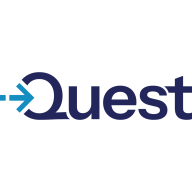

AWS Elastic Disaster Recovery and QoreStor compete in the disaster recovery category. AWS seems to have the upper hand in integration and support due to its native AWS infrastructure while QoreStor is superior in cost efficiency through its deduplication and compression features.
Features: AWS Elastic Disaster Recovery is appreciated for its instant block replication and comprehensive AWS service integration, facilitating seamless management and performance. Its automation in disaster recovery processes is notable for reducing management overhead. QoreStor, however, is valued for leading data deduplication and compression, optimizing data storage efficiently. It also offers flexibility by running on various hardware types, adding to its appeal.
Room for Improvement: AWS users recommend enhancements in automation for data replication and logging capabilities to provide better user insights. For QoreStor, improvement areas include expanding replication across multiple cloud tiers and strengthening support for archiving and ransomware protection.
Ease of Deployment and Customer Service: AWS Elastic Disaster Recovery supports deployment across diverse environments, including public and hybrid clouds, offering versatility. Its enterprise-level customer service receives high ratings. QoreStor focuses on on-premises deployment, integrating easily with existing hardware. Although its customer support is generally responsive, the absence of a formal ticketing system limits follow-up.
Pricing and ROI: AWS Elastic Disaster Recovery has a pricing model described as expensive, incorporating licensing, storage, and support costs. Despite potential higher upfront costs, it offers a favorable return on investment through reduced infrastructure costs and strong integration. In contrast, QoreStor's straightforward licensing model is seen as cost-effective, significantly reducing storage expenses through its deduplication capabilities. Both products positively impact disaster recovery ROI.
| Product | Market Share (%) |
|---|---|
| AWS Elastic Disaster Recovery | 0.6% |
| QoreStor | 0.3% |
| Other | 99.1% |


| Company Size | Count |
|---|---|
| Small Business | 5 |
| Midsize Enterprise | 4 |
| Large Enterprise | 7 |
| Company Size | Count |
|---|---|
| Small Business | 5 |
| Midsize Enterprise | 1 |
| Large Enterprise | 2 |
CloudEndure Disaster Recovery enables real-time replication and rapid recovery to enhance organizational resilience. Key features include block-level data replication, ease of use, cost-effectiveness, and automated recovery orchestration. Users benefit from increased efficiency, improved workflows, and enhanced data management, significantly improving organizational performance and business continuity.
QoreStor optimizes storage costs through advanced deduplication and compression, seamlessly integrating with backup infrastructures and supporting diverse hardware. It enhances data security with replication and offers flexible deployment with minimal maintenance.
QoreStor offers significant benefits in deduplication, which leads to space savings and reduced storage expenses. This system integrates effortlessly with backup platforms like NetVault and Veeam, functioning as a reliable backup target for both on-premises and cloud environments. The ease of integration is complemented by its replication capabilities, which add a layer of data security by enabling geographically dispersed backups. Its cloud tiering functionality extends storage capabilities, ensuring cost-effectiveness compared to other solutions. While enhancements are needed in areas like Cloud Tier support, Air Gap features, and GUI intuitiveness, the continued developments aim to further optimize storage and backup solutions.
What are QoreStor's key features?QoreStor is widely implemented in industries for backup and restore operations, providing data deduplication and compression as key functionalities. Its integration as a backup target across platforms like NetVault and Veeam makes it ideal for enterprises that require efficient data management and storage cost control. Many organizations utilize its features to optimize cloud storage seamlessly while focusing on internal data handling or acting as service resellers.
We monitor all Backup and Recovery reviews to prevent fraudulent reviews and keep review quality high. We do not post reviews by company employees or direct competitors. We validate each review for authenticity via cross-reference with LinkedIn, and personal follow-up with the reviewer when necessary.